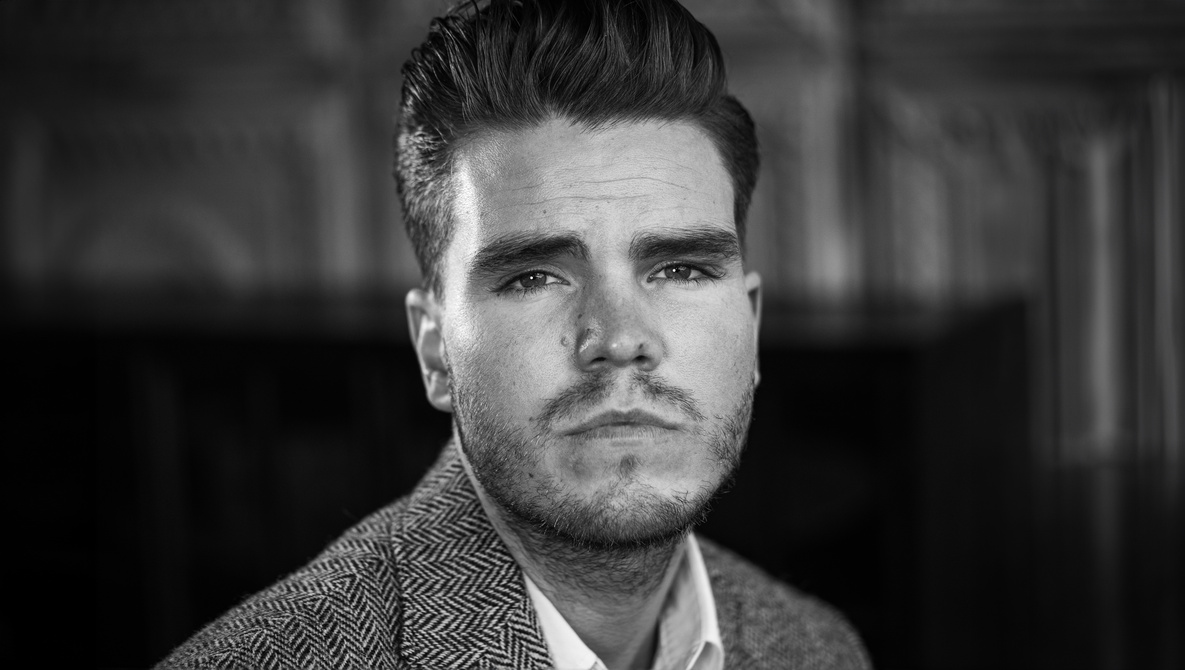
When I was at university, for something that wasn’t photography, I came across a study of photography genres judged by the metric of how long a viewer pauses to look at the images. The findings were clear in that portraiture stood alone at the top for the most time spent looking at them, eclipsing landscape and other popular genres, if I recall correctly. I say “if I recall” because try as I might, I cannot find this study again, and it has been a decade. Whether the study could be trusted or not, it doesn’t seem a farfetched conclusion: we like to look at people.
This goes a way to explain why portraits can resonate with you and why they likely resonate more often than other genres. But why do some portraits grip us more than others? In a sense, every portrait photographer resolves to uncover this secret, and perhaps some do. I have taken over 100,000 portraits, from editorial, to street, to headshots, to weddings, and so on, and I still don’t feel confident in answering the question. That said, I do have a few criteria that appear important.
What makes the topic so difficult is — like composition — it is possible to break every rule set and still come away with an incredible image. It is also possible to follow every rule and come away with a dreadful image. And as if this wasn’t enough of a minefield already, the portrait that resonates the most with you could leave another perfectly sensible photographer completely cold.
Nevertheless, here are some of the commonalities between portraits that resonate with me, both my own and others’ work.
Eyes
I will spare you the clichés about the eyes — we all know how important they are. Although many portraits will have the subject looking into the lens, for an image to simulate eye contact, it has to have something a little special. In all honesty, I’m not certain what the differentiator is between the two, but if a portrait feels as if it is making eye contact with me, it will resonate. These images tend to stay with me in some way. The above image of dancer Hanna Hughes has that quality for me, and it holds my gaze. Perhaps it is more to do with what’s happening around the eyes — the person’s expression, for instance — but some portraits appear to walk to hold your glance for a little longer than others.
Lighting

As purveyors of light, it should come as no real surprise that light is on this list; the lighting in any scene, of any genre, can make or break the final image. As crucial as it is, I wouldn’t say that the lighting has to be “amazing,” but rather fitting and impactful. In the above image of singer Ryan Beatty, the lighting isn’t some magnificent golden hour or complex setup. Instead, it is subtle and follows the look I was aiming at: a soft, slightly underexposed, dreamy image.
As far as I can tell, what type of lighting the portrait has does not have an effect on whether or not it resonates; there are dramatically lit portraits, low-key, high-key, natural light — all with examples that resonate. What matters is the role the light plays, either as a supporting cast member, accentuating the other elements that make the image great or as a main feature itself.
Story

Story is arguably the hardest quality to pin down, but also one of the most powerful. Portrait photographers who can consistently tell a story with an image are a rare breed. I have only managed it (by my own standards, at least) a handful of times, and I would be open to people contesting even those images. The above photograph is of Karrianne, a Sámi at Rørosrein in Norway. Reindeer are a central and crucial component to Sámi people, providing many lifelines in the freezing cold. The respect and love Karrianne has for their herd of reindeer, which mostly roam wild, is warming. This image wasn’t staged; it was just a moment that, to me (and hopefully others), tells a story. For that reason, I have a special affection for it, and it’s a portrait that jumps to my mind quickly.
Originality

There is, of course, one more element that predictably is a cause for images to resonate, portrait, or otherwise: originality. The above image, now 13 years old, is one I don’t hold in high regard anymore, having spent over a decade focusing on my own mistakes, but it’s my most successful. It has been in exhibitions in galleries all over the world, has had art collectors order one-off prints, and has been stolen more times than I can count. Something about it resonates with people, and there are several guesses, but top of my list is that it’s not an image like many you would see. For that reason alone, it is likely to hold attention more than an ordinary portrait. If someone is able to create a strong portrait that is unlike anything I have seen before, it is all but guaranteed to resonate with me.
Final Thoughts
These four common threads found in portraits that resonate with me are far from an exhaustive list. I would go as far as to say that it’s possible there are portraits that resonate with me that do not tick any of the boxes. Perhaps they are just four paths that can be taken to achieve a portrait that resonates.
What portraits have you taken that have seemed to resonate with people? What do you attribute their success to? Do you disagree with any of the criteria I suggested? Share your thoughts in the comment section below.



